By Randy Scholfield, TU communications director for the Southwest. When he started making split-cane bamboo rods 40 years ago, Mike Clark had no idea he could make a living from his hobby.
“I built them to satisfy my fishing interests,” he says.
Then, one day, a man wandered into his heated garage workshop and asked to buy one of his rods. He offered to pay $250 for it, which kind of blew Mike away.
“I thought, ‘Wow, I can actually sell these?’”
That was 40 years ago, and Mike Clark has been steadily making traditional bamboo rods—and amassing a legendary reputation for craftsmanship—ever since. His South Creek Ltd. cane rods now sell for thousands of dollars, and there’s a long waiting list.
From his workshop in downtown Lyons, Colo.—a comfortable, rustic space filled with displayed rods and the tools of his trade—Mike makes handcrafted rods, about 40 of them a year. He estimates that he’s made more than 1,000 rods in his career.
A few years ago, there was so much demand that he had a five-year waiting list—that’s right, five years. Mike stopped taking orders for several years just to catch up.
The good news: in 2012, he started taking orders again. Almost immediately, he had more than 80 orders to fill.
He’s tried to find ways to speed up the process and turn out more rods, he says. But it can’t be done—not without sacrificing quality. And he’s not about to do that.
He’s one of those craftsmen for whom tradition means doing things the right way. No shortcuts.
Why bamboo? “It’s natural. It’s simple. It works,” Mike says. The slower, smoother action appeals to many anglers, as does the allure of tradition: bamboo rods got their start in America before the Civil War and reached a high point in the last century, when Colorado rod manufacturers such as Granger, Wright-McGill and Phillipson produced high-end cane rods that are still prized by collectors.
With his finger, he traces the grain down—each grain line is straight as an arrow and matches the grain on the next piece, all down the rod length. You won’t find that on machined rods, he says, where the grain oftectun veers out of alignment. Under stress, that piece can pop out. Hand-planing throughout the process gives the rods more uniform strength and stability.
Mike has designed his rods in the popular taper style of those Colorado companies, but he’s taken that tradition to another level with handcrafted details and exceptional finish.
“People are fascinated that someone is still making bamboo rods by hand, not someplace in China,” says Kathy Jensen, Mike’s longtime assistant and office manager. “What Mike is doing here is a 130-year old technology. He’s still making rods the traditional way.”
He starts with culms of Tonkin cane—the strongest and straightest grained bamboo species—stacked and aged for years in his shop. He then splits them and shaves the strips into equilateral triangles tapered down to precise tip dimensions, using metal forms and block planes. It takes a steady arm and good eye.
That’s a key to his craft: unlike the (still very fine) mass-produced bamboo rods on the market, which are machined, he hand planes each rod strip down to exacting specs. Then he glues the strips together into blanks and adds nickel silver hardware, exotic woods and other finishes.
While there are many amateur and professional cane rod builders out there, few of them plane by hand at every step. Instead, they do “rough cuts” with a machine and then finish planing by hand.
Mike allows that you can make very good rods that way, but the difference of a true custom rod is in the details.
He shows me one of his rod sections. With his finger, he traces the grain down—each grain line is straight as an arrow and matches the grain on the next piece, all down the rod length. You won’t find that on machined rods, he says, where the grain often veers out of alignment. Under stress, that piece can pop out. Hand-planing throughout the process gives the rods more uniform strength and stability.
For Mike, “custom” also means designing rods to the exact specifications of each angler. He likes to spend time with them to learn their casting styles and fishing preferences. “I can tweak a taper for them,” depending on their individual needs. He also follows their lead on aesthetic finishes and materials, from choosing the color of silk threads to adding ivory with scrimshaw or jade reel seats and diamond inlays.
He makes clear, though, that he’s primarily interested in making great fishing tools, not art pieces—he wants his customers to fish with his rods, not hang them on a wall.
Over the years, he’s slowly built his business, largely through word of mouth. He’s friends with local fly-fishing author John Gierach, who has written about South Creek rods and put his own name on a couple of signature rods. He also sells the flies of another famous friend—A.K. Best.
That cachet has attracted bamboo buyers from around the world, including celebrities like guitarist and fly-fishing enthusiast Eric Clapton, whose letter of thanks for a rod hangs on the wall, among many other testimonials.
While Kathy has made a few rods under his supervision, she wouldn’t feel comfortable putting the South Creek Ltd. name on one of her rods.
“Our clients pay for Mike’s high level of craftsmanship and years of experience—you can’t duplicate that.” It’s one reason why, when Mike retires, the South Creek Ltd. name and business will be retired, too.
While Mike’s not planning to retire any time soon, he’s planning to cut back on the number of rods he makes, to about 30 a year.
“We want to slow down and go fishing a bit,” he says.
He’s devoted to his local water, the St. Vrain, and in recent years has worked with the local Trout Unlimited chapter to raise thousands of dollars to restore the river habitat, which was badly damaged by extreme floods a couple years ago.
“We’re getting our fishery back to health,” he says.
Then he excuses himself to get back to his workbench. He has orders to meet.
For more info on South Creek Ltd. rods, go to www.southcreekltd.com.






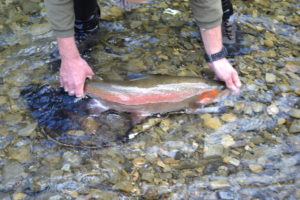 Growing up on the dirt roads just east of Parker, Colorado, I was fortunate enough to explore the many streams and lakes that this great state has to offer. In particular, I often found myself hiking up small creeks in the Gunnison Basin in search for the pockets of eagerly-feeding brookies that never once questioned my poor presentation or choice of fly. By the time I was twelve years old, I had my own fly rod and I was hooked.
Growing up on the dirt roads just east of Parker, Colorado, I was fortunate enough to explore the many streams and lakes that this great state has to offer. In particular, I often found myself hiking up small creeks in the Gunnison Basin in search for the pockets of eagerly-feeding brookies that never once questioned my poor presentation or choice of fly. By the time I was twelve years old, I had my own fly rod and I was hooked.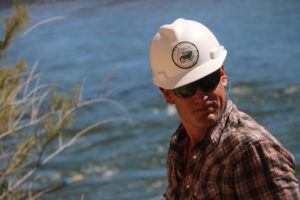 After moving back to Gunnison in 2013, I worked with a team of fellow raft guides and conservationists to start a non-profit rafting company. River Restoration Adventures for Tomorrow (RRAFT) is a small outfitter dedicated to protecting critical watersheds through community engagement and hands-on restoration work. Over the past three seasons, our team has worked with over 400 community volunteers and youth to conduct various conservation projects on over 300 miles of riparian corridor throughout Colorado and Utah. Our trips ranged from cottonwood planting projects with Delta and Cedaredge High School youth, to overnight trips with the Adaptive Sports Center and Peace of Adventure, to 10-day surveys of invasive plant species along the Colorado River in Cataract Canyon with the National Park Service and the Southwest Conservation Corps Ancestral Lands crews. Not only were we making a difference for the rivers, we were helping to inspire and engage the next generation of stewards.
After moving back to Gunnison in 2013, I worked with a team of fellow raft guides and conservationists to start a non-profit rafting company. River Restoration Adventures for Tomorrow (RRAFT) is a small outfitter dedicated to protecting critical watersheds through community engagement and hands-on restoration work. Over the past three seasons, our team has worked with over 400 community volunteers and youth to conduct various conservation projects on over 300 miles of riparian corridor throughout Colorado and Utah. Our trips ranged from cottonwood planting projects with Delta and Cedaredge High School youth, to overnight trips with the Adaptive Sports Center and Peace of Adventure, to 10-day surveys of invasive plant species along the Colorado River in Cataract Canyon with the National Park Service and the Southwest Conservation Corps Ancestral Lands crews. Not only were we making a difference for the rivers, we were helping to inspire and engage the next generation of stewards.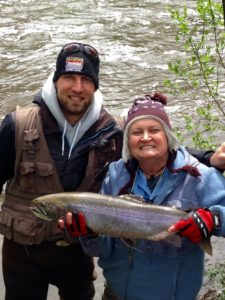 After moving South in the early 1990s I transferred to the Southern Colorado Greenback Chapter of TU. After several years, I was on the Board again, serving mainly in the capacity of Communications Chairman. I will be retiring this year, but plan on maintaining an active role in the chapter. Hubby Paul and I are Life Members, and proud of that.
After moving South in the early 1990s I transferred to the Southern Colorado Greenback Chapter of TU. After several years, I was on the Board again, serving mainly in the capacity of Communications Chairman. I will be retiring this year, but plan on maintaining an active role in the chapter. Hubby Paul and I are Life Members, and proud of that.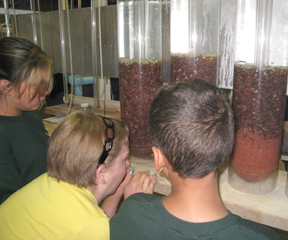 Kids’ education. Several years ago, Jenny Kedward from the local Sierra Club, Pat McGraw, then-President of our Chapter, and I collaborated to do a two-day summer camp program for 12-14 year olds in our community that concentrated on water education and fishing. We conducted it for four years in a row. Our chapter’s Frostbite Fish-Off Tourney, held for several years, is a close second.
Kids’ education. Several years ago, Jenny Kedward from the local Sierra Club, Pat McGraw, then-President of our Chapter, and I collaborated to do a two-day summer camp program for 12-14 year olds in our community that concentrated on water education and fishing. We conducted it for four years in a row. Our chapter’s Frostbite Fish-Off Tourney, held for several years, is a close second.

 I know you won’t tell me your top spot, so what is your second favorite fishing spot or favorite fishing story?
I know you won’t tell me your top spot, so what is your second favorite fishing spot or favorite fishing story? 

 watersheds to be at normal levels in order to flourish. Dissolved oxygen (DO) is fundamental to aquatic life. With higher levels of snowpack, there is more capability for dissolved oxygen in water due to higher water levels and colder temperatures. Cold water can hold more DO than warm water. Higher DO levels are achieved when water levels and flow rates are high and where the water is aerated in the rapids.
watersheds to be at normal levels in order to flourish. Dissolved oxygen (DO) is fundamental to aquatic life. With higher levels of snowpack, there is more capability for dissolved oxygen in water due to higher water levels and colder temperatures. Cold water can hold more DO than warm water. Higher DO levels are achieved when water levels and flow rates are high and where the water is aerated in the rapids.
